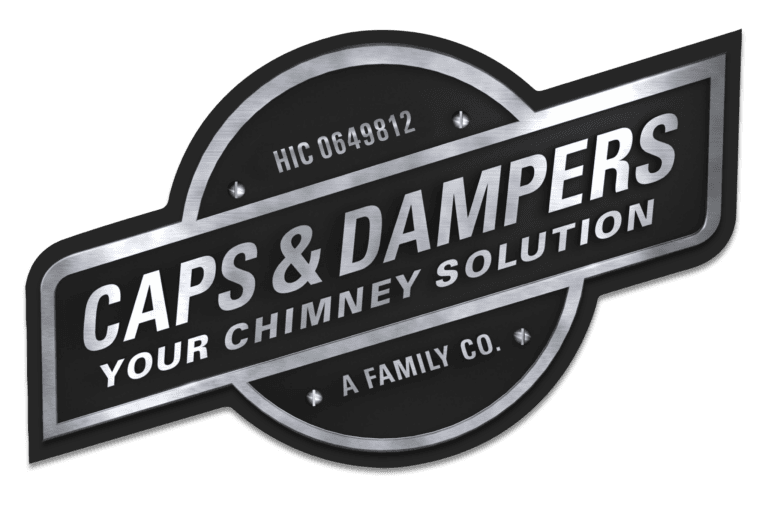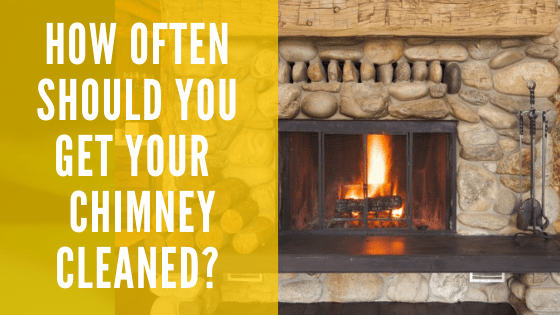Getting your chimney cleaned is an essential part of home maintenance and care. As per the Chimney Safety Institute of America, fireplaces should be cleaned as soon as there is ⅛” of creosote build-up.
Can you clean your chimney all by yourself, also known as going the DIY route? Technically yes, but it’s always safer and more reliable to hire a professional chimney sweep to come over and take care of your creosote problem.
As per the National Fire Protection Association, every chimney should be cleaned at least once a year no matter how much creosote buildup has taken place. So what exactly do we mean by “chimney should be cleaned?” What is involved in this process?
What Happens During a Chimney Cleaning?
The objective of a chimney cleaning is to alleviate your fireplace and chimney of excess creosote and soot. This can become a rather messy and cumbersome process that can result in dirt flying everywhere and even the possibility of damage to your home.
But, if you hire a skilled team of chimney cleaners, you can avoid this hassle and the potential for damage within your space.
Every time you burn wood in your fireplace, some amount of creosote will be deposited into the flue lining. If your chimney isn’t properly maintained, this buildup will evolve into a much more precarious hazard. Repairs will become very expensive and will likely involve more than just a simple cleaning.
A chimney sweep is someone who cleans creosote, soot, and obstructions from chimney liners, fireboxes, smoke chambers, and dampers. Keeping the chimney system clean and clear of obstructions is critical for a variety of reasons, many of which are linked to the safety, function, or longevity of your chimney system. The bottom line is that an improperly maintained chimney may become a fire danger and degrade to the point where repairs are prohibitively expensive.
When you burn wood in the fireplace, a little quantity of creosote is always deposited in the flue lining, but, when some kinds of wood are used, the accumulation is much worse. Untreated wood, for example, is damp and does not burn cleanly. Pine also causes creosote to build up quickly in the chimney, making it an unsuitable wood to burn.
Some Examples of Unclean Substances Getting into your Chimney
The main impetus of dirt seeping into your chimney comes by way of untreated wood, which is full of moisture and refuses to burn cleanly. Additionally, pine will force creosote to accumulate faster causing it to layer and become a greater fire hazard.
The more often you use your fireplace, the greater chance it’ll be in need of a cleaning.
Inspecting for Other Variables Including Damage
Your professional chimney sweep will be on the lookout for other factors. In addition to creosote and other flammable materials, they will also assess the fireplace and chimney structure for cracks in the lining and other potential damage.
A crack in the flue lining can sometimes be tricky to detect. Your specialists may enlist the help of a specialized camera system that allows them to peek into tough to see areas and see the impact that heat may have had on the lining. If there’s a crack, your crew will amend it ASAP.
In addition to your fireplace, you should also have the crew examine your wood-burning stoves. This is another annual inspection item that is used to determine whether carbon monoxide has seeped into your home.
A fireplace should not be used if the flue liner is broken, since heat from the chimney may escape and cause a house fire.
Any kind of stove system, including wood-burning stoves, should be examined yearly to ensure there are no flaws. One of the issues created by faulty systems is the possibility of lethal carbon monoxide entering the house; carbon monoxide poisoning is the leading cause of poisoning deaths in the United States.
Creosote Residue & Buildup
Creosote residue will accumulate in your chimney depending on how frequently you use your fireplace to burn wood. Many variables impact the quantity of creosote attached to the walls of your chimney, including the amount of airflow into your chimney and the use of inadequately seasoned wood, both of which favor such a buildup. If you have unburned wood in the firebox, creosote will also accumulate in the flue.
Items to Help Improve Your Flue System
What About Chimney Cleaning Logs?
Chimney cleaning logs may assist in reducing creosote accumulation marginally. However, they should not be used in place of a chimney cleaning.
Regular inspections and cleaning can help prevent creosote accumulation in your chimney. Furthermore, only burn seasoned wood at high enough temperatures.
Use Effective Chimney Brushes
Wire bristle chimney brushes are among the most commonly used brushes to give you the best time and least hassle with cleaning your chimney.
It’s wise to wear goggles, dorn gloves, and possibly wear a dust mask while performing this type of cleaning. You may also need a flashlight and drop cloths to assist in the clean. Handling sooty buildup and clearing blockages is a lot easier when performed safely.
How Frequently Should You Clean Your Chimney?
How Often Should You Clean Your Chimney?
Your chimney should be cleaned and inspected on an annual basis, as a minimum requirement. If you use it nearly year-round, you may want to consider a biannual cleaning.
It is advised that homeowners obtain an annual chimney inspection to ensure that all of their systems are in functioning condition and running properly.
Other venting systems attached to furnaces and stoves should be cleaned on a regular basis as well to ensure safe operation. Fireplace, stove, furnace, and heating appliance systems are critical to the safety of your house and family and should not be overlooked or skimped on. Don’t take the chance that an uncovered flaw will result in an expensive repair or, worse, a chimney fire.
If you utilize a conventional chimney cleaning business, they will usually place you on an annual inspection schedule. They will notify you if it is time to sweep during these inspections.
Even if you only use your fireplace or stove occasionally, an annual check of all heating venting systems, chimneys, stove systems, and furnace flues is still recommended. During these checks, any faults or concerns that are discovered must be addressed, even if cleaning is not required.
Modern prefabricated metal chimneys have been carefully prepared to resist the high heat of a chimney fire without sustaining significant damage. If they are damaged by a chimney fire, the expert advice is to stop using the chimney until the unit is replaced.
Schedule an annual cleaning with the best squad in New England. Contact Caps and Dampers for a chimney cleaning from highly trained professionals.

